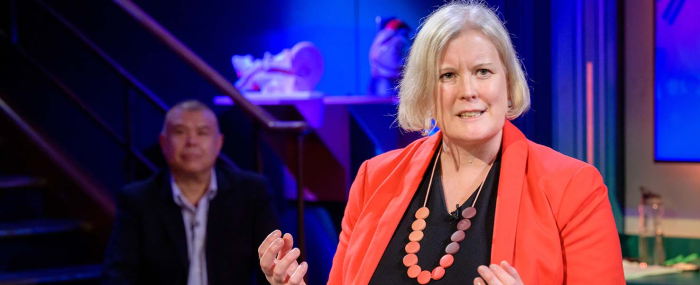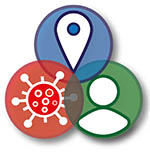
Communicating the complexity of COVID-19 virus transmission
As we face another festive season under the shadow of COVID-19, the Royal Institution has dedicated its annual Christmas Lectures to exploring how science has responded to the pandemic. In the second of three lectures hosted by England’s Deputy Chief Medical Officer Professor Jonathan Van-Tam and broadcast on BBC Four, Professor Cath Noakes of the University of Leeds will discuss the science of COVID-19 virus transmission.
In this blog Professor Noakes, who leads Theme 2 of PROTECT, previews the themes and issues to be explored.
COVID-19 has prompted us all to think more about how viruses spread. Members of the public and policymakers all have numerous questions around how and where the virus is transmitted and what we can all do to keep ourselves and others safe. Answering these is challenging as the physics and biology of the transmission process is complex and uncertain, and is influenced by the virus itself, human behaviour, and the environments that we are in.
Disease transmission is usually thought of as a medical challenge, but COVID-19 has demonstrated just how important other disciplines are in understanding the spread of the virus. This is recognised in the PROTECT programme, which alongside virology and epidemiology, brings together expertise from engineering, architecture, mathematical modelling, aerosol science and social sciences to understand the routes of infection, and design strategies to mitigate risks, particularly in workplace settings.
During the Christmas Lecture, I will explore the physics processes that influence how viruses can be transported between people and how human behaviour and the design of the indoor environment influences the risk of exposure.
Transmission occurs through aerosols and droplets that carry virus, and strategies such as keeping our distance, wearing masks and having effective building ventilation are important to control the spread. However, there remain many uncertainties, including exactly how virus people emit, the relative importance of different transmission routes, and what infectious dose is needed to cause infection.
Within the PROTECT programme, we are using approaches such as Computational Fluid Dynamics and Quantitative Microbial Risk Assessment modelling to simulate the behaviour of these aerosols and droplets as they are emitted by people, and then their fate as they are dispersed into the environment. Researchers are using these models, together with data from exhaled human breath samples, outbreak investigations and laboratory studies of virus survival and transfer characteristics to evaluate the relative importance of different transmission routes.
Through these methods, the PROTECT team are able to better understand the detailed effects of variables such as ventilation, mask wearing and hand hygiene on likely exposure to the COVID-19 virus, together with understanding the complex human behaviour that determines where and when exposure is most likely to happen.
The complexity of the transmission process is demonstrated in our recent article supported by PROTECT, where we consulted 27 international experts to develop an interactive visualisation of the different routes of transmission between two people. The study illustrates the importance of considering all routes of infection, and the need to apply multiple different control strategies to reduce the risk of transmission.
‘The Perfect Storm’ will be broadcast as part of the Royal Institution’s Christmas Lecture series on BBC Four at 8pm on Wednesday 29 December, during which Professor Noakes will appear alongside Professor Jonathan Reid of the University of Bristol (also part of the PROTECT team) and Professor Julia Gog of the University of Cambridge.
The other lectures in the series are broadcast on Tuesday 28 and Thursday 30 December respectively. They will all be available for catch-up on BBC iPlayer.






0 Comments